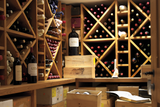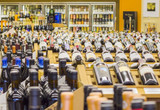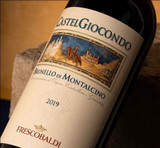Sep 5th 2025
Mastering the Wine Cellar: Essential Tips for Home Storage
Even the best wine can lose its character if stored improperly. The right wine cellar or mini wine cooler in the home means that each bottle stays as good as the winemaker produced it. There is more to storing wine than placing bottles on a shelf. It’s about giving the bottles a clear way to age beautifully without losing flavors.
These basic, sommelier-recommended tips can help even novices and seasoned wine collectors store wine at home like a professional.
The Basics: What a Home Wine Cellar Really Is
A wine cellar doesn’t have to mean a dark underground room filled with dusty bottles. But what does it really mean at home? A wine cellar is a wine storage facility that is close to your home. It may be a walk-in room, a temperature-controlled cabinet, or a home wine cooler installed in a kitchen. Not only rare vintages, but all wines need to be stored. Even ordinary bottles will taste better when stored under the appropriate conditions.
Begin to assemble your own wine cellar by viewing the list of cellar-worthy wines posted by WHWC.
Tip #1: Control the Temperature
It is important to maintain good wine temperature. The majority of bottles have an optimal storage temperature of around 55°F (13°C). Keeping them too hot will make them age too quickly and dull their flavors. Too cold may dry the cork or cause it to swell at different places, allowing air to enter and oxidize it.
Red wines are best served at 55-60°F, and whites and sparkling wines may be served a little cooler. A home wine cooler is good since it is stable and does not need intricate work to install. In this easy arrangement, each bottle will remain fresh until you are ready to cork it.
Tip #2: Maintain the Right Humidity
Humidity is an issue that is more important than most realize. The ideal humidity level for wine is 60-70 percent. When the air is excessively dry, the corks will contract and allow the oxygen into the bottle. An excessive level of humidity may result in the development of mold on the labels and the corks.
Such basic devices as hygrometers allow us to observe the dryness or wetness of air. When the air is dry, small humidifiers may be used to increase the moisture. These tools help maintain proper humidity, protecting wine from oxidation and mold.
Tip #3: Keep It Dark and Still
Light is not a good mix with wine. Wine may be degraded by UV light, desensitizing aromas and flavors with time. Older vintages with sediment are especially sensitive, as vibration can disturb their balance.
This is the reason we select a quiet, dim storage place. In case of a necessity for natural light, UV-protective glass or curtains may be considered. UV protection on a home wine cooler provides additional protection, keeping bottles safe against both light and vibration.

Tip #4: Store Bottles Horizontally
When cork-sealed bottles are laid down, they remain wet and therefore remain tight and airtight. This prevents oxygen exposure and helps preserve the wine. Storing bottles on their sides will also allow you to cram in more bottles and read labels easily.
Sparkling wines and screw-capped bottles can be stored vertically without fear of drying out or spillage of the cork. In all other bottles covered with corks, we rack horizontally. This makes all the corks wet and tight, regardless of how full the wine cellar is.
Tip #5: Organize for Easy Access
An effective cellar is not only time-saving, but it also preserves your wine. Mark shelves by type, region, or vintage, so you do not have to move around a lot of shelves. Categorizing by drinking window keeps ready-to-enjoy bottles up front and easy to access.
Cellar-tracking apps or handwritten logs keep us on top of what is ready to drink and what is not. This additional planning prevents accidental displacement, dropping of bottles, or premature opening.
Tip #6: Plan for Aging (or Drinking Soon)
Not all wine bottles age alike. There are wines to be consumed immediately, and there are those that improve with age. At Woodland Hills Wine, we keep a record of every bottle we get with a label indicating when the bottle was purchased, tasting notes, and an approximate window of peak drinking.
This informs us whether to drink a wine now or wait ten years or more. This practice ensures smarter spending and helps avoid regret later.
WHWC Picks: Wines Worthy of Your Home Cellar
1.La Rioja Alta Rioja Viña Ardanza Reserva 2016
Rioja 80% Tempranillo, 20% Garnacha. The Tempranillo and the Garnacha are aged 36 and 30 months, respectively, in American oak. It has a deep garnet-red look and has a layered scent of spicy, balsamic licorice, clove, nutmeg, black pepper, and hints of brandied cherry and raspberry jam.
2. Allan Scott Sauvignon Blanc Marlborough 2025
This is a fruit-focused wine that is bright, juicy, and full of tropical fruit and herbaceous aromas, balanced with crisp passionfruit with a dry finish. Machine-harvested grapes are fermented at a cold temperature using indigenous yeasts to preserve the aromatics.
3. Great Heart Chenin Blanc Swartland 2021
It is produced using 100 percent Chenin Blanc grown on bush vines of up to 40 years and soils made of decomposed granite. Partly fermented in tank and partly in older French oak using indigenous yeasts, it has aromas of stone fruit and yellow apple, a textural mid-palate, and a full mouthfeel.
4. Piper-Heidsieck Cuvée Brut Champagne NV 375ml
It is a combination of Pinot Noir, Pinot Meunier, and Chardonnay with some reserve wines to ensure consistency. It shows bright orchard fruit aromas (apple, pear) and tasting notes of almond, hazelnut, brioche, and toast, finishing with a smooth palate and a lingering, smoke- and spice-filled finish.

FAQs
- How cold should a wine cellar be?
The majority of wines perform best between 55°F (13°C). Reds prefer to be a bit warmer, whites a bit cooler.
- Should I store wine in a home wine cooler?
A wine cooler will provide a more consistent environment for your wines, especially when temperatures or humidity fluctuate a lot in your home.
- So, what is the ideal humidity level for storing wine?
Maintain a humidity of 60 to 70%. This avoids drying of corks or the growth of molds.
- What is the way to arrange a home wine cellar?
Mark them by type, region, or vintage, and take into consideration digital tracking to avoid misunderstandings.
- What wines can I cellar and what can I drink now?
Full-bodied reds such as Rioja or Bordeaux will tend to taste better with ageing in the bottle. Most rosé and crisp whites will be at their best when young.
From Bottle to Glass, Storage Makes the Difference
To maintain wine in good condition until it is opened, just remember four rules: maintain a constant temperature, maintain the correct humidity, avoid light, and store your bottles. Whether you’re storing just a few bottles or managing a full cellar, these steps ensure your wine tastes exactly as the winemaker intended.
Visit the cellar-worthy wines of WHWC and begin to stock up on your collection today.







